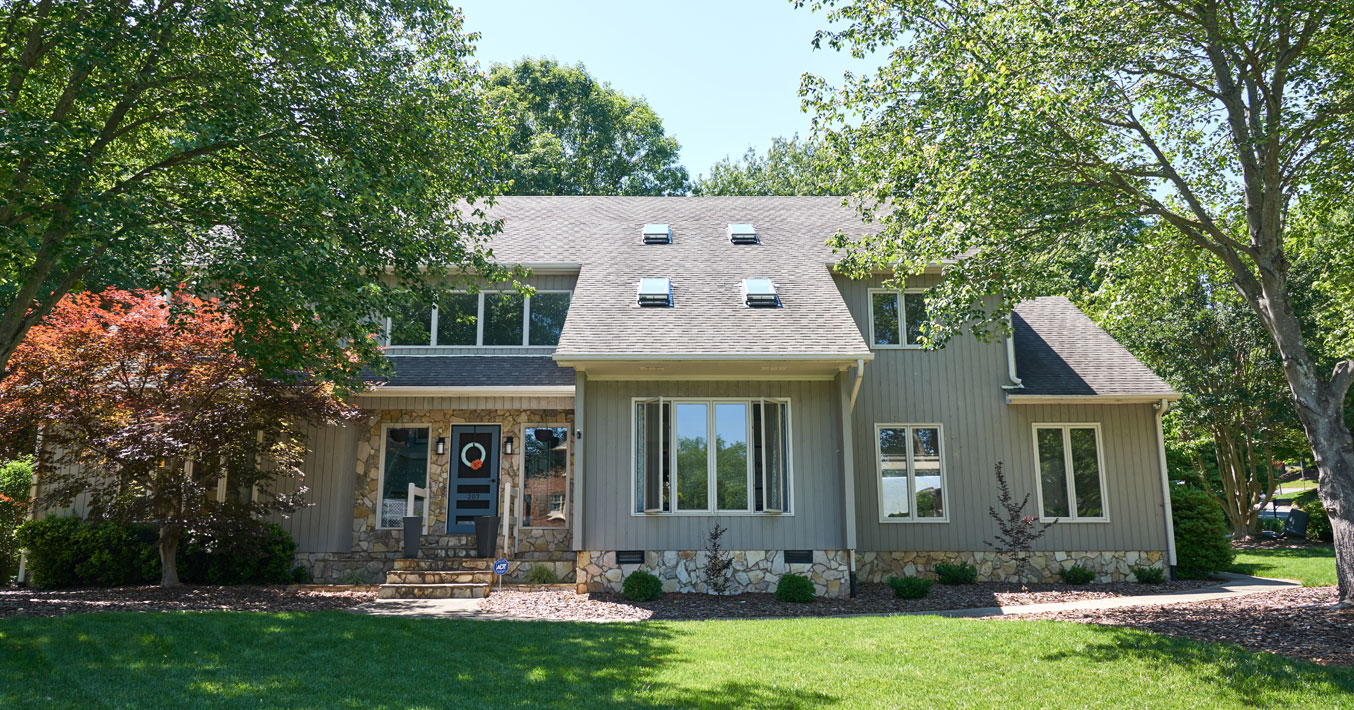Metro-Boston-based LaBelle Roofing views skylight replacement during reroofing as a standard operating procedure, and the company does most of its skylight sales as replacements.
“My line of logic with the homeowner is if we’re going to replace your roof that’s the time to replace your skylights, because it’s going to be a lot more affordable,” said Robert LaBelle owner of LaBelle Roofing and sister company Wayland Skylights, a VELUX 5-Star Skylight Specialist. “The skylights may not be leaking now, but you have a bunch of roofers up there with tools and banging around and that can potentially compromise the skylights, especially when they are 10 to 15 years old. They could start leaking later.”
About 95 percent of the skylights they install are replacements and about 5 percent are new cut-ins. LaBelle estimates that 60 percent of skylights his company installs come from his roofing business.
Skylight replacement not only means peace-of-mind for LaBelle and the homeowner, but it also means increased profits.
Replacing the skylights can add $500 to $1,000 dollars to our bottom-line profit, so replacing them also makes business sense.
He finds that homeowners typically see the logic of replacing old skylights as part of the reroof, but some resist. If he can’t convince them, LaBelle adds a notation to the spec sheet stating that LaBelle Roofing is not responsible for skylights that start leaking after the new roof is installed, and he has the homeowner sign it.
“I’m not afraid to walk away from a job if they won’t sign,” he added.
When he first got into the roofing business, he wanted nothing to do with replacing skylights during reroofing jobs. His team was intimidated by the different sizes and the interior work, but after becoming a 5-Star Skylight Specialist his team got training on how to measure for skylights and the sales team learned how to sell them.
“I think people should be encouraged to replace them,” he said. “No. 1, I want to sleep at night, so we replace. No. 2, an average skylight might add another $500 to $1,000.”
With federal solar tax credits, available through the end of 2019, the homeowner not only benefits from the latest skylight innovations, they save on the cost of the new skylights, both product and installation.
Roofers have a unique vantage point: they see the effects of sun, rain, snow, hail and extreme temperatures on the roof. And while VELUX No Leak skylights are engineered not to leak – the company has never had a warranty claim on product for leaking – more than a decade up on the roof takes its toll.
LaBelle sees dented cladding from wintertime shoveling, dry rot on curbs and attempts by others to fix really old skylights with caulking.
“The skylight is taking a direct beating from the sun, so they wear out after 20 years,” he said.
Back to top
